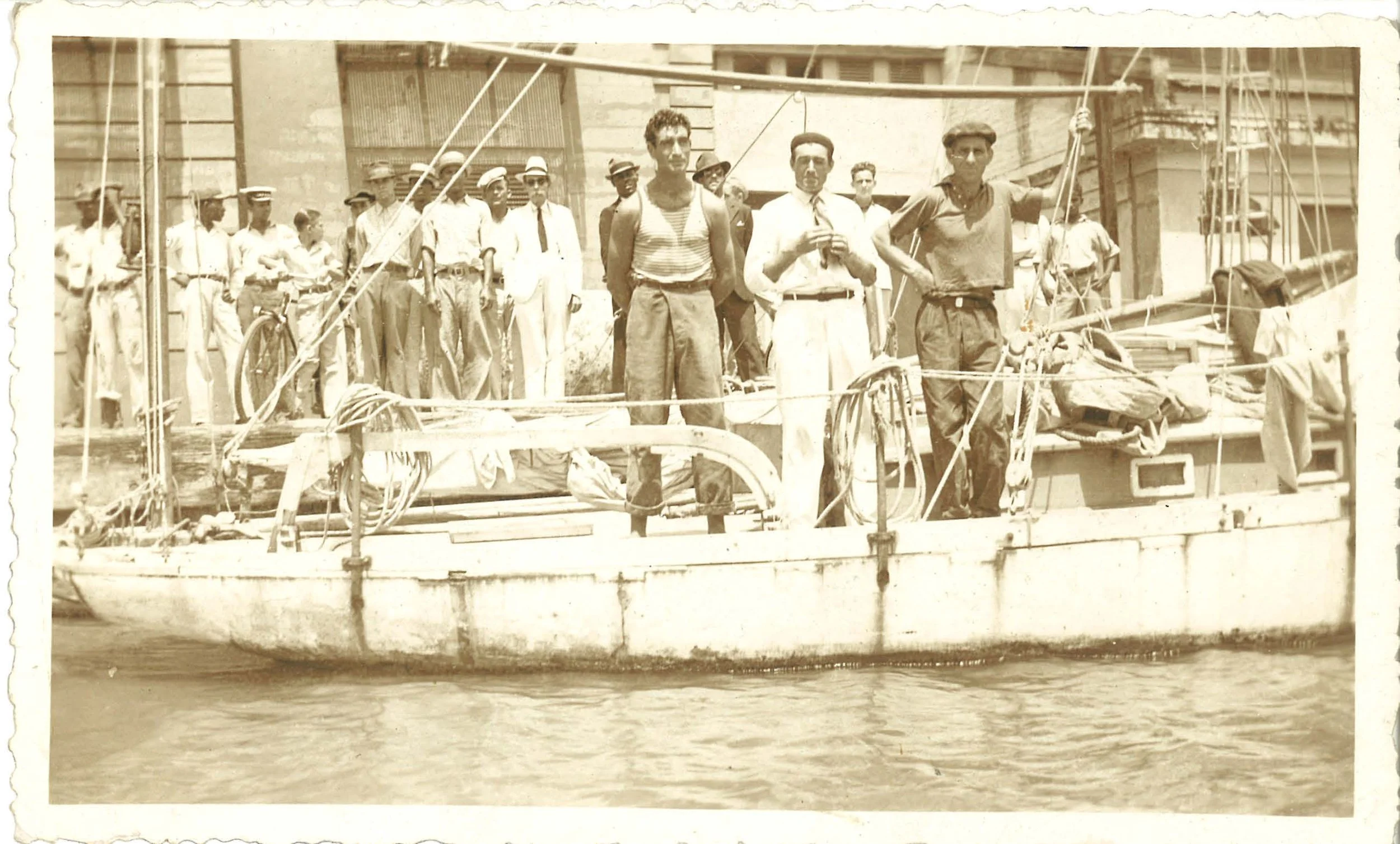Miguel Marina’s distinctive expressionism reflects the longing of a life spent in exile and the hope for a world free of violence. His dreamlike tableaux of angels, saints, and the symbolic objects of his Basque Country are unique depictions of an earthly paradise tinged with the sorrow of a homeland lost.
Born in Bilbao in 1915, Marina grew up the eldest son of a middle-class Basque family. When the Spanish Civil War erupted in 1936, Marina joined the fight against General Francisco Franco, the leader of the Nationalist forces who were attempting to crush the democratically elected government. In 1939, with Franco’s victory imminent, he escaped from Spain, crossing the Atlantic with eight other Basques in a small fishing boat. He eventually arrived in the United States as a political refugee.
Marina honed his original style on the grounds of the Center for the Study of Democratic Institutions, a prominent think tank located in Santa Barbara, California, where he lived with his wife, Madeline, and daughter, Constance. There, he worked out of a converted stable behind his family’s cottage and found himself amidst a lively group of writers, intellectuals, and activists, including W. H. Ferry, John Cogley, Donald MacDonald, and Scott Buchanan. This group gathered regularly at the Marinas’ cottage for long conversations about politics, philosophy, and religion. Marina’s art also became part of the think tank’s culture. His paintings made their way into the homes of many of the Center’s resident intellectuals and he designed the cover for two of the Center’s publications.
From 1959 to 1977, Marina regularly exhibited one-man shows at the Esther Bear Gallery in Montecito, and was included in group shows in Los Angeles and Pasadena. While living in Madrid in 1972, his work was shown at the Galería Antonio Machado, and the Exposición nacional de arte contemporáneo. Earlier in his career, he also assisted José Vela Zanetti on “Mankind’s Struggle for a Lasting Peace,” a massive mural inside the United Nations Conference Building in New York City. He continued to live and work in Santa Barbara until his death in 1989.
Posthumously, Marina’s work has seen three exhibitions. From November 17, 2009 to January 10, 2010, paintings from Marina's Stations of the Cross and Palomares series were exhibited in El nexo español: artistas españoles en Nueva York, 1930-1960 at the Instituto Cervantes in New York City. In 2015, the centenary of the artist’s birth, Professor Anthony L. Geist of the University of Washington organized a retrospective of Marina’s work in his native city of Bilbao. A trilingual catalogue with reproductions of his work and a short biography was produced for the exhibition, Icons of Memory: The Work of Miguel Marina, Basque Painter, that was shown at the Ilustre Colegio de Abogados del Señorío de Vizcaya from October 21st to November 13th. In 2016, the exhibition traveled to the Musée Basque et de l’histoire de Bayonne in Bayonne, France, where it was shown from June 10 to July 24th. One of his Palomares murals hangs in the Casa de Cultura in Guernica.
Read Miguel’s account of his escape from Spain following the Spanish Civil War, or listen to him describe his experiences during the Spanish Civil War and his voyage across the Atlantic.
Miguel (on boat, far left), on the boat that took him from Venezuela to the Dominican Republic in 1941.
Miguel in his studio at his home in Santa Barbara.
Miguel in his studio at the cottage at The Center for the Study of Democratic Institutions.
Miguel’s cover illustration for the Spring 1971 issue of The Center Magazine.
Miguel and Vela Zanetti working on “Mankind’s Struggle for a Lasting Peace” at the UN in 1953.
Miguel in his studio at his home in Santa Barbara.






